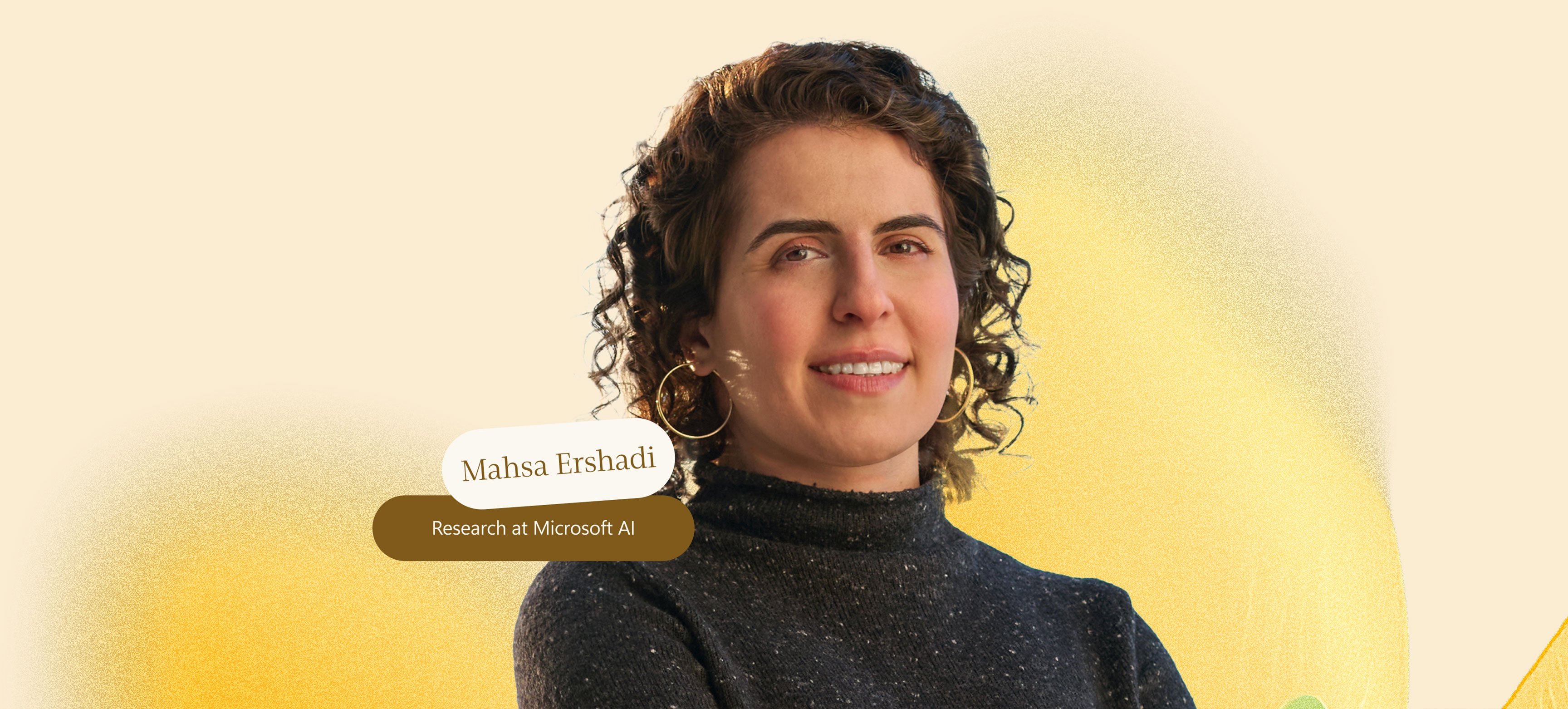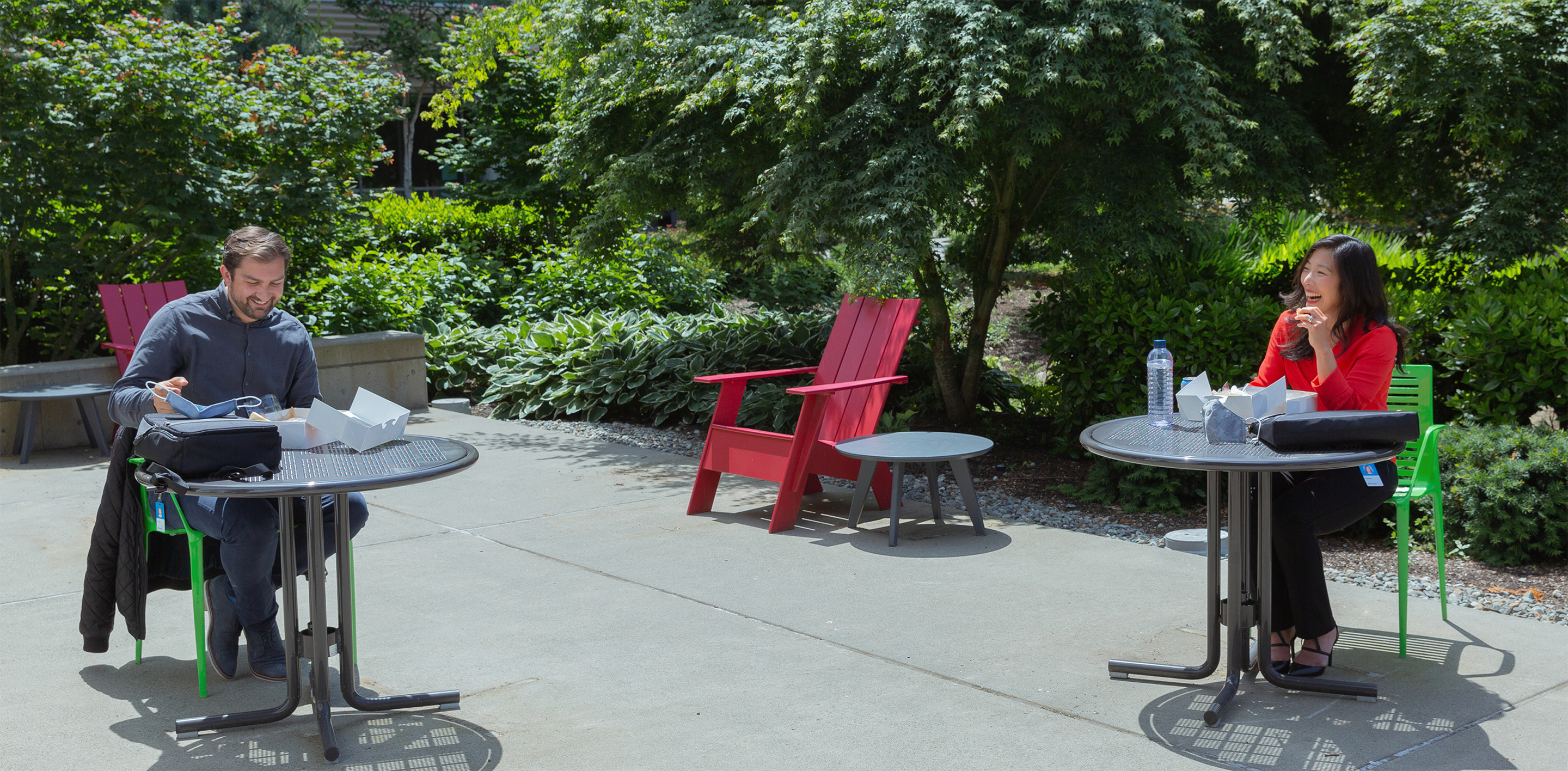
For Mahsa Ershadi, great user experiences aren’t just designed — they’re discovered through deep research. As a Principal User Experience Researcher, Mahsa blends psychology, cognitive neuroscience, and AI to shape technology that truly understands people. From large-scale surveys to immersive ethnographic studies, Mahsa uncovers the nuances of human behavior to inform and refine Copilot’s user experience and bridge data with empathy.
How would you describe your job and what you do?
As Principal User Experience Researcher, my role is to bridge the gap between human behavior and technological design by providing data-driven insights that shape the user experience. I employ a diverse range of research methodologies to ensure that every aspect of Copilot is optimized for our users. This includes large-scale surveys to capture broad behavioral trends, participatory research and co-creation sessions that involve users directly in the design process, and moderated interviews that allow for in-depth exploration of individual experiences. Additionally, I leverage observational studies and ethnographic methods to uncover the more subtle, unspoken aspects of user behavior. Each of these methodologies provides a unique lens through which we gain valuable insights into user needs, preferences, and pain points. By synthesizing these approaches, I ensure that Copilot is not only intuitive and usable but truly aligned with the cognitive and emotional drivers of the people who interact with them. Ultimately, my role is to transform research findings into actionable strategies that drive meaningful, user-centered design.
How did you first become interested in User Experience Research and what motivated you to pursue it as a career?
My interest in user experience research grew from a desire to understand the patterns behind human decisions and how cognitive processes influence problem-solving and behavior. This curiosity drove me to study psychology and cognitive neuroscience, fields that revealed the intricate ways our brains shape actions and choices. As I delved deeper, it became clear that the key to designing technology that resonates with users lies in understanding how people think and feel at a fundamental level.
What excites me most is the way these two disciplines—psychology and neuroscience—inform the development of AI. By understanding cognitive biases, decision-making processes, and the brain’s intricate wiring, we can design AI that doesn’t just respond to commands but anticipates, adapts, and aligns with human behavior in a deeply meaningful way. It’s not just about creating smarter machines; it’s about building digital companions that truly understand and respond to the human experience, which is the crux of what I do every day.
“It’s not just about creating smarter machines; it’s about building digital companions that truly understand and respond to the human experience, which is the crux of what I do every day.”
Mahsa Ershadi, Principal UX Researcher at Microsoft AI
What educational background or training do you have that has helped shape your skills?
My interest in user experience research emerged from a fascination with understanding how people think, make decisions, and solve problems. I started my academic journey with a BSc in Genetics and Molecular Biology at McMaster University, where I was intrigued by how complex systems operate at both the microscopic and behavioral levels. This curiosity expanded as I pursued a Bachelor of Education at the University of Toronto, where I explored how individuals engage with and process information.
As I delved deeper into cognitive neuroscience and learning with an EdM from Harvard University and later a PhD in Psychology from Boston College, I began to see the powerful intersection between human cognition, emotional responses, and technology. I realized that to design truly impactful digital experiences, you need to understand the complexities of human behavior—something that requires not just technical knowledge but an understanding of how people think, feel, and make decisions. This perspective is what drives my work today, shaping the way I approach AI development to ensure it not only meets functional needs but resonates with users on a deeper, more intuitive level.
What are you currently working on?
At Microsoft AI, I lead research across a diverse array of high-impact initiatives, allowing me to contribute both strategically and deeply to projects that shape the future of Copilot. I oversee user segmentation and target audience understanding, ensuring that Copilot and its features are aligned with the right market fit. This involves identifying key user segments, delving into their needs, behaviors, and pain points, and ensuring that our solutions are not just functional but truly resonate with a wide range of users.
In addition, I lead research into the integration of Copilot across various sectors, with a particular focus on education. This includes gaining a deep understanding of the needs of students, educators, and parents, and ensuring that Copilot is designed and deployed to meet those needs, ultimately enhancing the learning experience and making a positive impact in education.
A significant portion of my work also centers around exploring the potential of multimodal AI—integrating both voice and visual inputs, as well as incorporating wearables, to create more intuitive, engaging, and immersive user experiences. This includes understanding how wearable devices can augment interactions with AI, making them more responsive and contextually aware. Furthermore, I am focused on embedding personality into generative AI, ensuring that interactions don’t just function but feel human, emotionally resonant, and deeply connected with the user.
The breadth and diversity of these initiatives empower me to leverage my expertise in human cognition, behavior, and emotion, shaping Copilot so that it not only responds but truly understands and connects with our users in a meaningful, impactful way.
Can you share an overview of your role as a User Experience Researcher and how it specifically relates to Microsoft AI?
As Principal User Experience Researcher at Microsoft AI, my role revolves around deeply understanding our users—their behaviors, needs, motivations, and pain points—so that these insights can directly inform and guide product design. I spend my days engaging with a diverse range of users: from current users to understand what they like and what improvements they’re seeking, to churned users to uncover why they left, and prospective users to identify barriers that prevent them from adopting Copilot.
In line with Mustafa’s philosophy, “users say it best,” my days are centered around real, authentic feedback. I dig into the psychology of user decision-making, focusing on understanding the “why” behind their behaviors and choices. This user-centered approach is fundamental to shaping products that aren’t just technically sound, but that genuinely resonate with the people who use them. By incorporating these insights, I help ensure that we create user experiences that feel human, intuitive, and impactful—ultimately leading to more satisfied users and deeper engagement with Copilot.
What role do user feedback and usability play in your process? How do you incorporate feedback to improve your work?
User feedback is the bedrock of everything I do. It’s not just about soliciting likes or dislikes—it’s about observing behavior, interpreting the nuanced subtleties of user interactions, and leveraging those insights to continually refine and iterate. As a Psychologist, I immerse myself in understanding both the obvious and the more hidden patterns of user feedback, looking beyond surface-level responses to uncover deeper motivations and underlying drivers. This ongoing, iterative process is what shapes the design and evolution of Copilot. I firmly believe that creating exceptional user experiences requires constant evolution, grounded in actionable, real-world user insights. Feedback is not merely a step in the process—it’s the cornerstone of all decision-making, guiding every aspect of how we shape and improve technology.
This is especially crucial in frontier areas like generative AI, where the technology is still nascent and unfamiliar to many users. In these early stages, it’s vital to understand how people interact with, perceive, and make sense of such emerging technology. By deeply engaging with user feedback, I can ensure that Copilot evolves in ways that are intuitive, accessible, and genuinely valuable to users, helping bridge the gap between innovation and adoption.
With the introduction of AI, what changes or shifts do you anticipate within the industry?
AI is poised to radically transform the field of user experience research, ushering in a new era of personalization and adaptability. By leveraging AI’s ability to analyze vast amounts of data, we can predict user behavior with remarkable precision, creating experiences that are not only responsive but anticipatory. This data-driven approach will also enable real-time insights into how users engage with technology, allowing us to make quicker, more informed decisions. However, as powerful as AI is, it’s crucial that we balance its capabilities with genuine human empathy. Technology should not overshadow the nuanced emotional and psychological factors that shape user behavior—it should enhance the experience by aligning with the very human nature of users. In an increasingly AI-driven world, the most successful products will be those that maintain an equilibrium between data and human connection.
“User feedback is the bedrock of everything I do. It’s not just about soliciting likes or dislikes—it’s about observing behavior, interpreting the nuanced subtleties of user interactions, and leveraging those insights to continually refine and iterate.“
Mahsa Ershadi, Principal UX Researcher at Microsoft AI
What excites you as a User Experience Researcher with the integration of AI?
What excites me most about AI’s integration is its capacity to bring an unparalleled depth of understanding to user behavior. AI enables us to move beyond surface-level observations, diving into complex patterns within large datasets to predict user needs, optimize experiences, and create truly personalized interactions at scale. For me, the potential to transform our ability to create meaningful and intuitive experiences, tailored to individual users, is both fascinating and profoundly aligned with my commitment to crafting digital environments that resonate deeply with people.
The ability to create a truly new digital entity—a generative AI companion—is what really excites me. Copilot has the potential to address a wide range of human needs: from offering personalized, real-time support in learning, mental health, or personal development, to providing companionship for people who feel isolated or need assistance with tasks. By making AI more emotionally intelligent and responsive, we have the opportunity to shape interactions that feel human, with the ability to adapt to the unique needs of each user. This vision of AI as a genuine companion, rather than a tool, is both thrilling and full of untapped potential.
How do you stay updated on current tech trends and emerging practice?
Staying ahead in a field as dynamic as user experience research requires a combination of curiosity, continual learning, and collaboration. I immerse myself in the latest academic research, particularly in neuroscience, psychology, and AI, to ensure I am well-versed in the scientific underpinnings of user behavior. I also make it a point to attend industry conferences and participate in professional forums where the cross-pollination of ideas and methodologies can spark innovation. Additionally, I value the insights shared by colleagues and peers, particularly in interdisciplinary collaborations, as these offer fresh perspectives on emerging practices. In a rapidly changing field, I embrace the ongoing challenge of adapting and expanding my knowledge base, always driven by an inquisitive mindset that fuels growth.
Looking back at your journey, what advice would you give to aspiring researchers who are just starting out on their own path?
To those beginning their journey in user experience research, my advice would be to embrace both the analytical and empathetic aspects of the role. The ability to interpret data is invaluable, but understanding the human behind the numbers is just as essential. Equip yourself with both qualitative and quantitative research methods, and remember that the most impactful insights often emerge when you approach problems with curiosity and adaptability. The field is evolving at an extraordinary pace, and flexibility will serve you well. Above all, I encourage aspiring researchers to stay grounded in real-world applications—connecting theory with practice is where user research truly makes its mark and drives meaningful change in products and experiences.
As AI continues to advance, the opportunity to create something entirely new—a truly empathetic, personalized AI companion—is one of the most exciting frontiers in UX research. Aspiring researchers should be ready to challenge the boundaries of traditional UX and explore how AI can enhance the most human aspects of technology.





